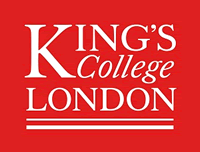About the Project
Orthotopic liver transplantation (OLT) is currently the treatment of choice for end-stage liver diseases and liver-based metabolic disorders. The replacement of the diseased organ by OLT is curative but carries surgical risks and the need for life-long immunosuppressive therapy. The limited availability of suitable donor organs for liver transplantation, and consequently the increasing time on the transplantation list while waiting for OLT, has encouraged the search for alternative therapies for these patients. Hepatocyte transplantation is being evaluated as a method to support liver function in acute liver failure and as a therapy for some liver-based metabolic disorders. The concept of hepatocyte transplantation has numerous advantages over OLT:
-a single donor liver would provide sufficient hepatocytes for the treatment of a number of patients;
-unlike whole organs, hepatocytes can be cryopreserved and stored in cell banks, offering the advantage of immediate availability in emergencies;
-for the patient, avoiding major surgery and retaining their native liver is a major advantage;
-there would also be considerable savings in (i) costs as compared to whole organ transplantation and (ii) length of stay required in the intensive care unit
To date hepatocyte transplantation has been used mainly to treat liver-based metabolic disorders in children and to bridge patients with acute liver failure to OLT. In 2002 the Hepatocyte Biology and Transplantation Group at King’s College Hospital started clinical cell transplantation. To date, 15 children with metabolic liver-based disorders have received hepatocyte transplantation under this program. Most of these patients showed a clinical improvement and were successfully bridged to OLT. However, no sustained correction of the metabolic disorder was observed in these patients.The success of hepatocyte transplantation from earlier experiments in animal models could not be fully reproduced in humans. Although the results from the clinical studies have been encouraging, no complete correction of any metabolic disease in patients by hepatocyte transplantation alone has been reported.
There are still a number of important areas for improvement and development of the technique, which cannot be directly investigated in humans. Patients undergoing orthotopic liver transplantation or hepatocyte transplantation both require long-term immunosuppression, which carries the risk of infection and drug-induced toxicity. Rejection of the allogeneic hepatocytes and/or eventual senescence of the cells transplanted are probably contributing factors to the loss of long-term function of these cells in clinical transplants. New techniques are needed to overcome this limitation. In liver conditions where the cells affected are actually not the hepatocytes—such as in biliary atresia, in infants, where the bile ducts are affected in the perinatal period leading to biliary cirrhosis — one possibility is to transplant a donor’s liver but then replace the liver donor hepatocytes with the patient’s own hepatocytes isolated from his explant, allowing immunosuppression minimisation or withdrawal. Preliminary studies have shown that donor hepatocytes may be able to repopulate the transplanted donor liver in the rat strain combinations proposed for this model.
The aim of this study will therefore be to prove that liver transplantation followed by hepatocyte transplantation could lead to allograft repopulation by the native hepatocytes isolated from the explant liver. The animal work will include allogenic liver transplantation with infusion of the autologous hepatocytes in the spleen. Allogenic liver from female donors will be engrafted into male recipients followed by fresh and cryopreserved autologous hepatocyte transplantation in the first week. Native liver repopulation will be evaluated using FISH technique or fluorescent cell imaging technology. The translational potential will be to apply this technique in children who undergo liver transplantation for biliary atresia, the single most common indication for liver transplantation in children.
The group led by Professor Dhawan is based at King’s College Hospital, within the world-renown Institute of Liver Studies, Alex Mowat Labs, one of the largest European centre for liver transplantation. The candidate will be joining a team undertaking GMP cell isolation and will therefore receive all relevant training in GMP work and tissue processing. The team is currently composed of 4 PhD students, 2 postdocs, 2 full-time senior researchers and 1 quality manager, 3 clinicians. The environment within King’s College London will give ample time and resources for further training, as can be seen on the university website www.kcl.ac.uk
For full details, please visit http://www.kcl.ac.uk/health/study/studentships/div-studentships/timb/dhawan.aspx

 Continue with Facebook
Continue with Facebook

